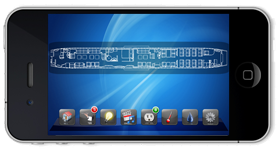Leather seat covering has been a favorite finish material that is easy to maintain and conveys luxury in business jet aircraft. It passes the burn test requirements easily and can be custom dyed to match any interior. Typically upholstery grade leather comes from European cows where barbed wire is not used in fences that can cause scratches and scars on the animal’s hide. There are also specialty leathers and hides that come from deer, ostrich, crocodiles, stingrays and sharks as well.
The initial process in tanning leather starts where the hides or “crusts” are then cleaned and pickled to remove the hair, soften and cure the material. This prevents the hides from drying out or decomposing over time. When the hide comes out of this process it has a grey blue finish and the crust is known as a “wet blue” and is now ready for tanning.
There are several types of tanning processes which include natural or vegetable tanning, aniline and semi-aniline dying and synthetic tanning that creates unique finish effects. Vegetable tanned leather has a very natural look as it uses dyes made from vegetables, tree barks and plant matter to give warm colors such a tans and browns. Aniline tanning uses a wider array of pigments that create vivid colors this type then has a protective wax coating applied to give it a glossy finish. This type is the most widely used in aircraft seating as it wears well, looks good consistently and needs little maintenance.

Upholstery grade leather is quite different than fashion grade material. There are four main catoagories of upholster leather, full grain, top grain, split and corrected. Full grain leather uses all layers of the hide; it is thick and sometimes difficult to upholstery with but will wear best over time. Top grain and spilt are hides that have been separated using only the top of the hide or the bottom which can give different effects in grain or suede finish. Corrected leather is a lower quality material grained pattern is embossed which takes away from the natural beauty of the animal. This type is lower in cost but will not last long and where out in heavily rubbed areas like arm rests.
If given the opportunity, inspect each hide prior to upholstery. Look for thin spots, scars, scratches, blemishes, pin holes and rub marks. Select the best sections for the seat panels and back panels. Less desirable sections can be used in the non-visible areas of the bucket and cushions. Ask the shop to provide you with a rub test if possible. Testing machines known as the Taber Abrasion Test is provide from some leather suppliers. The high the number of rubs that the leather can withstand, the longer the seat will wear during operation.













